let us discover the genius in your child
At HMS, we want our students to grow into independent problem solvers and caring, responsible citizens. With those goals in mind, teachers prepare the environment to a high degree of perfection with a series of sequential, manipulative and sensorial materials. With the prepared environment set, our curriculum can properly function to address the child’s natural tendency for physical and social growth.
The job of a well-trained Montessori teacher is to develop an individualized curriculum for each child and to bridge the gap between the materials within the environment and the child. The teacher begins by acutely observing each child, and reflecting upon his observations to carefully craft the level-appropriate curriculum for the child. Thus, the environment becomes a nourishing place for each and every child no matter the child’s level of development. The physical space in which our programs take place is one of the most important contributors to our success, second only to the quality of our staff.
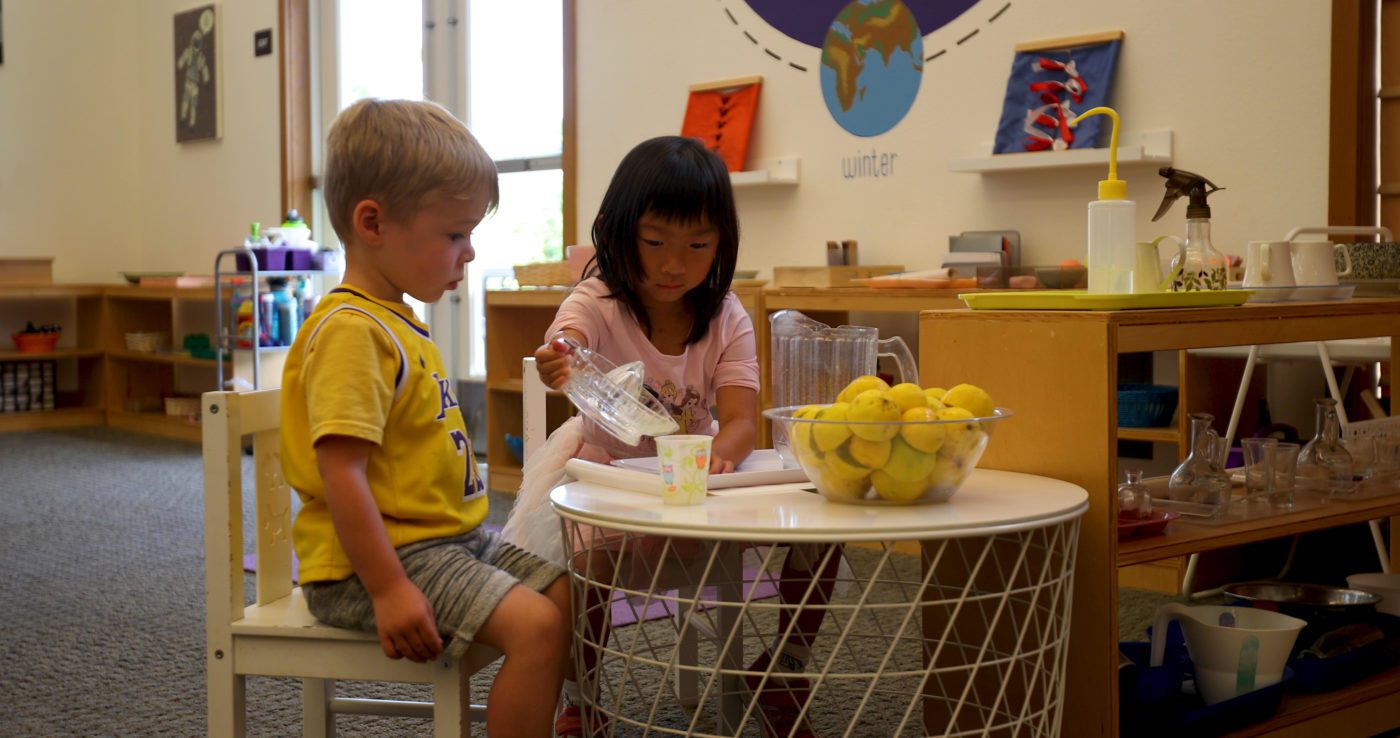
Practical Life
Dr. Montessori recognized that the hand is the instrument of the mind, and the child learns faster when he is able to actively participate. Practical life exercises are the first contact the child has with the Montessori environment. These lessons have been planned in such a way that the child will gain a fine motor control and confidence within his environment. Motor control is accomplished through coordination of both the large and small muscles and also hand-eye coordination. Through these exercises, the child develops a sense of dignity and independence. Practical life is the first area of practice for the Montessori student as it is the foundation for an independent and satisfied individual.
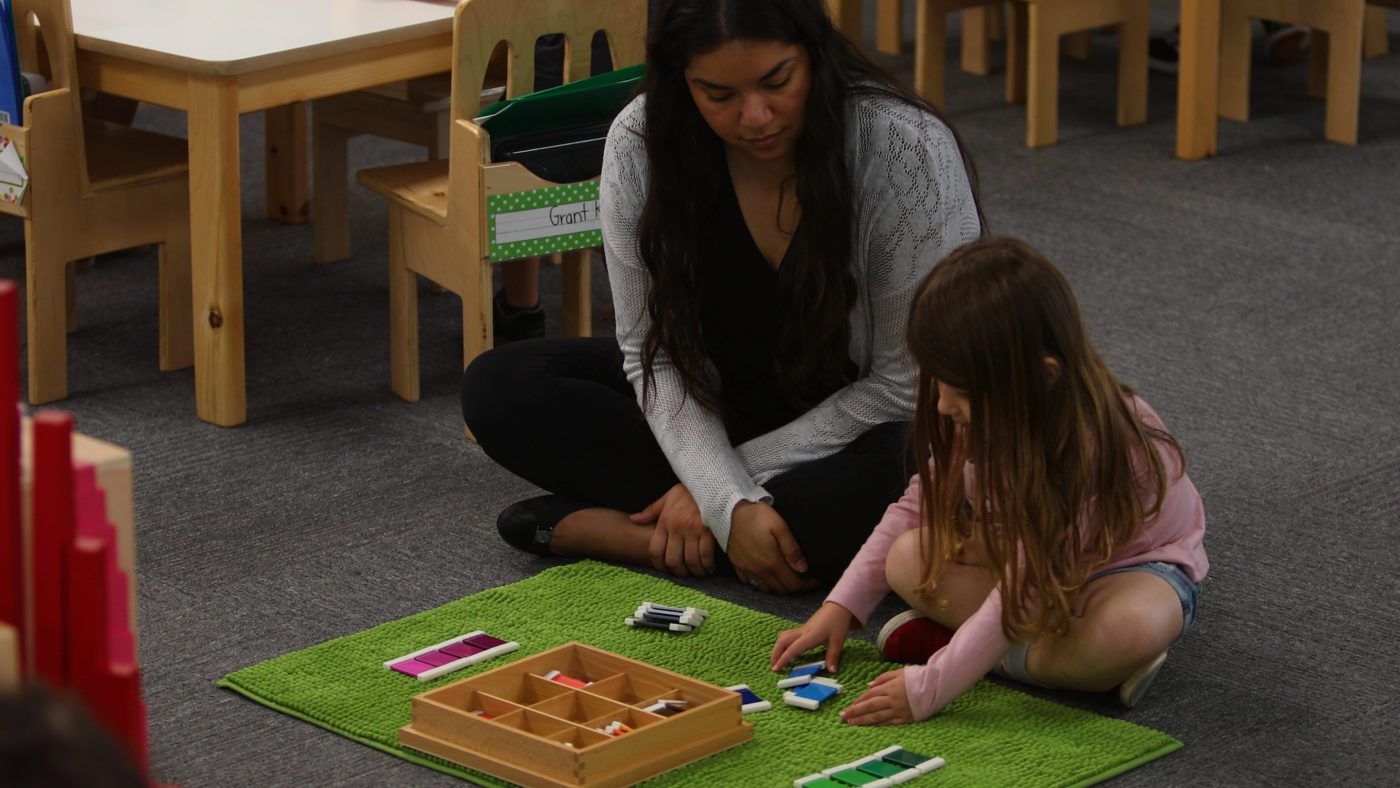
Sensorial
All children love to touch things and explore their environment. This need is innate. The stimuli are first perceived by the senses, which activate the nerves, which send the impression to the brain. The intellect, through the senses, creates abstract ideas. Montessori sought to train or exercise the senses through the use of specially designed didactic sensorial equipment. When working in solitude, it is the material that does the teaching through the child’s manipulation of it. This “auto-education”, learning through movement of the materials, is a basic concept of sense training. It is the job of the teacher to make sure that the sensorial materials available to the child so she can gradually increase the child’s ability to perceive things in a more refined and ordered way.
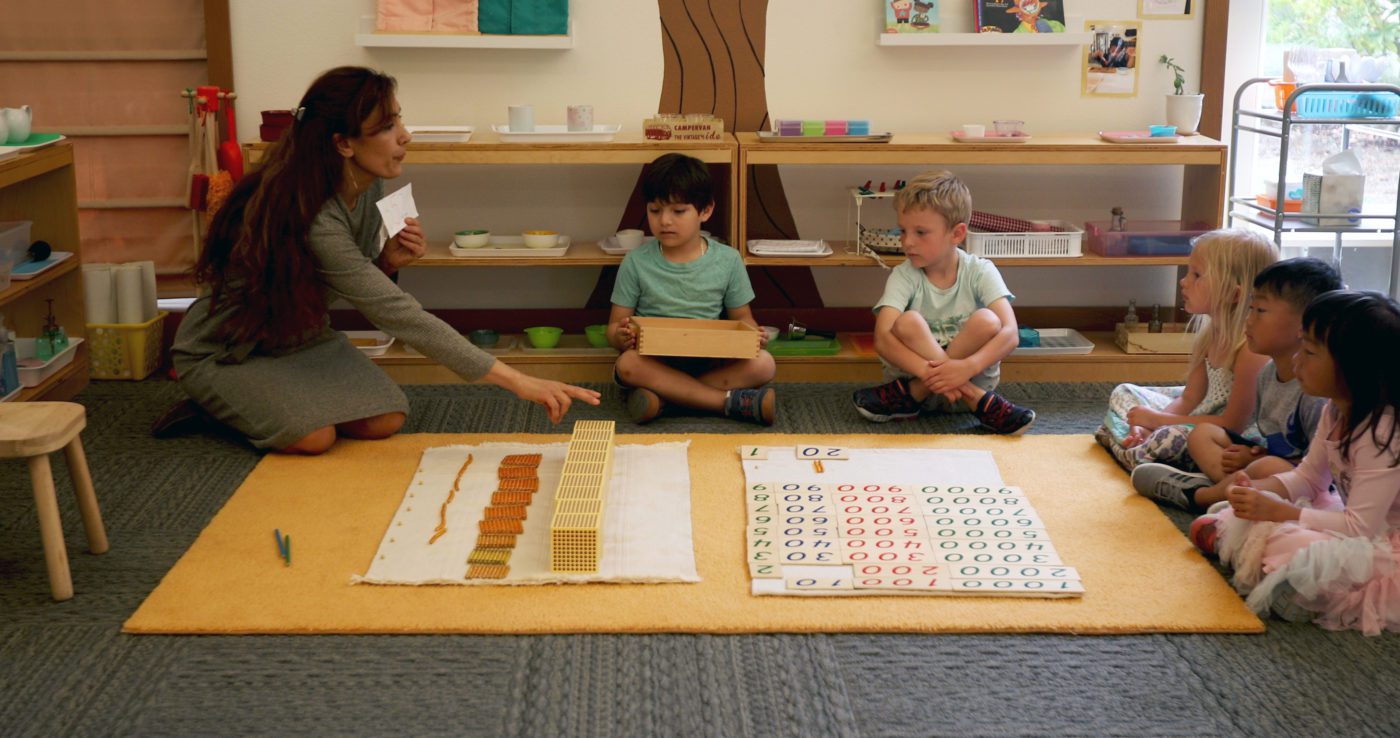
Mathematics
In the Montessori classroom, mathematics learning starts with concrete materials that lead to abstract understandings. Counting shells, objects and rods of graduating lengths gives the child a sensorial “feel’ for numerical properties. Sandpaper numerals are also presented for the child to trace and form a “muscle memory” for recognition and later writing of that numeral. When the child has mastered the concepts of `1-9, the decimal system can be introduced concretely by use of the golden bead material. Beautiful handmade glass beads represent units, tens, hundreds and thousands. The child can construct 4 digit numbers using these materials in the Bank Game. They build quantities and match the symbols (numerals) to them.
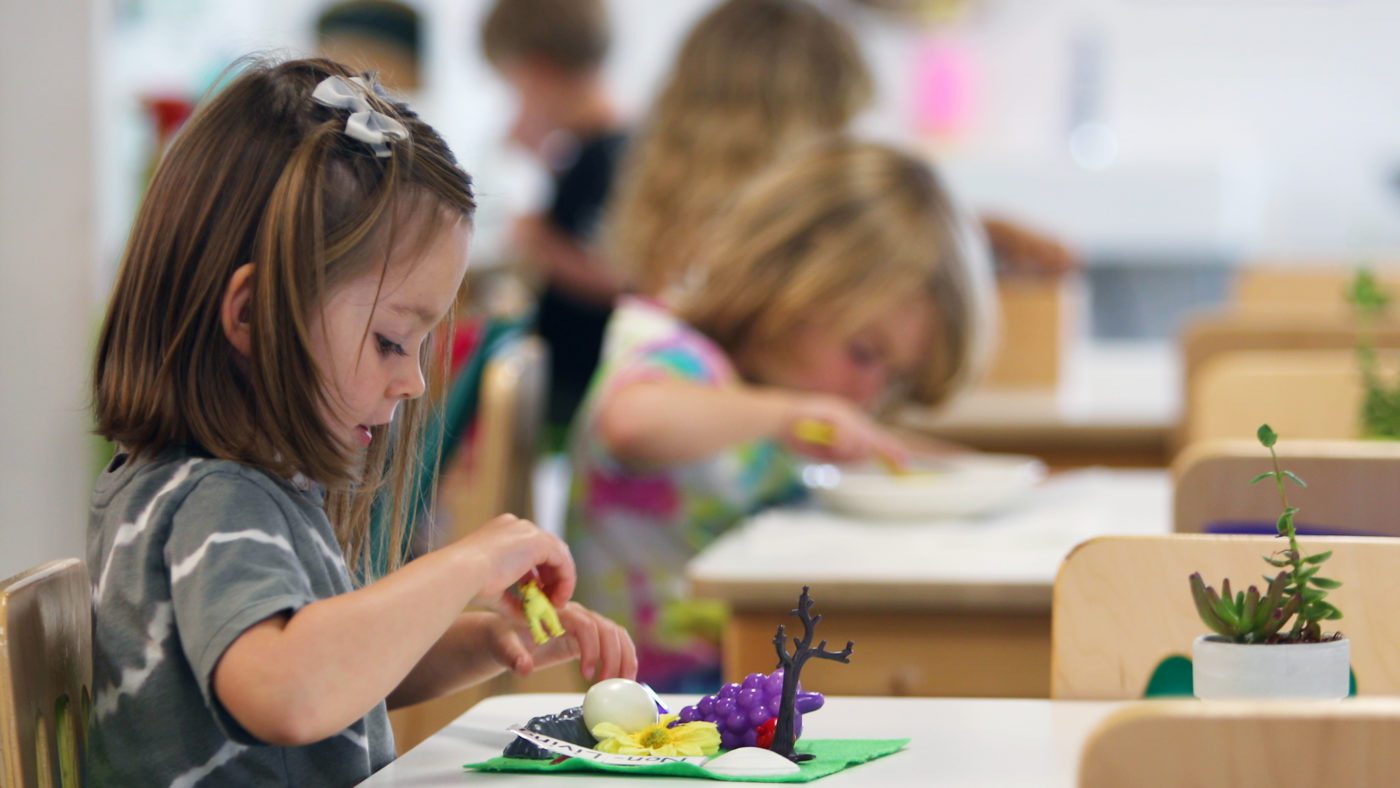
Language
Language is pervasive in all areas of a well-prepared Montessori classroom. Since the earliest Practical Life and Sensorial activities, materials and activities have been named and identified. Comparatives, laudatory terms, and superlatives (e.g. big, bigger, biggest) are integrated into these activities. In science and geography, animals, countries, land forms, water forms, insect, plants, parts of trees, leaves and flowers have been discussed. Children learn the names of shapes, parallelogram, rhombus, pentagon, and curvilinear triangle, all with hands-on experience.
Children love language; English, as well as other languages, are easily assimilated at this age. Exposure to the diversity of life and other languages is part of the curriculum. Reading begins early by tracing sandpaper letters and learning the phonetic sound of these letters. Once the child has mastered sounds, he/she can begin to build words with the moveable alphabet. Since English is not a strictly phonetic language, teachers will introduce the exceptions such as “ch” and “sh”. Story writing and creative expressions are encouraged. Spelling is not corrected in the beginning of these activities. It is more important that the idea be expressed. Later, spelling rules are introduced and corrections can be made when the child has experienced success.
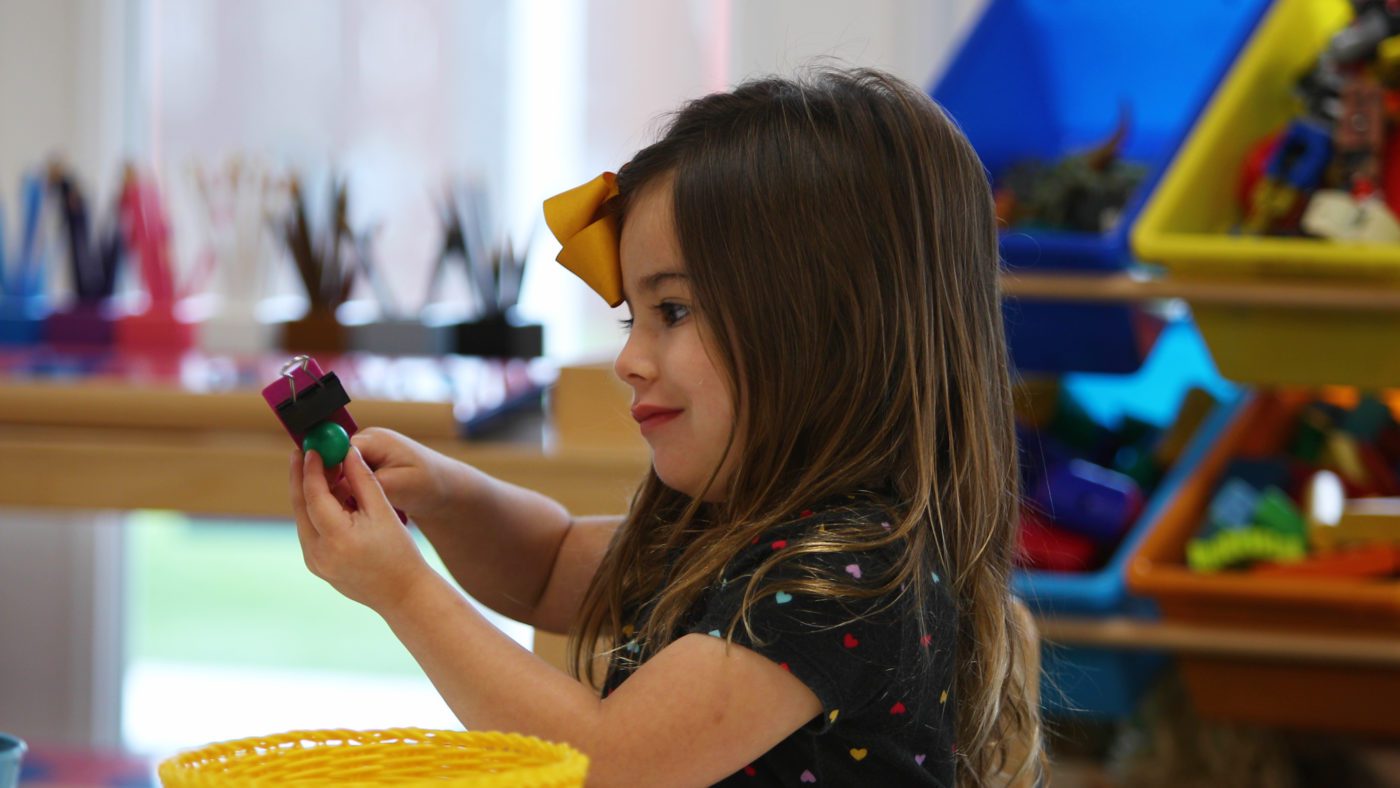
Cultural, Geography, Botany, & Science
Montessori presents the world to the child. We start with the globe of land and water. Children love puzzles. As they work with them, the names of the continents are used; later the names of the countries are also introduced. It depends on the interest of the child. Folders of pictures representative of life in each continent are available. Parents and other presenters are invited into the classroom to talk about other countries, show slides, make food, teach songs, dress in native garments. This promotes understanding and peace.
The science material begins with the natural world around us. Animals, birds, insects, reptiles and amphibians are compared and contrasted. Children look at different biomes of the world. Parts of plants, leaves and flowers are presented in puzzle form. Real specimens are dissected and studied. The world of nature fascinates children. Magnets, light, color, and physical properties are explored. In all activities, we teach respect for and care of all living things.

